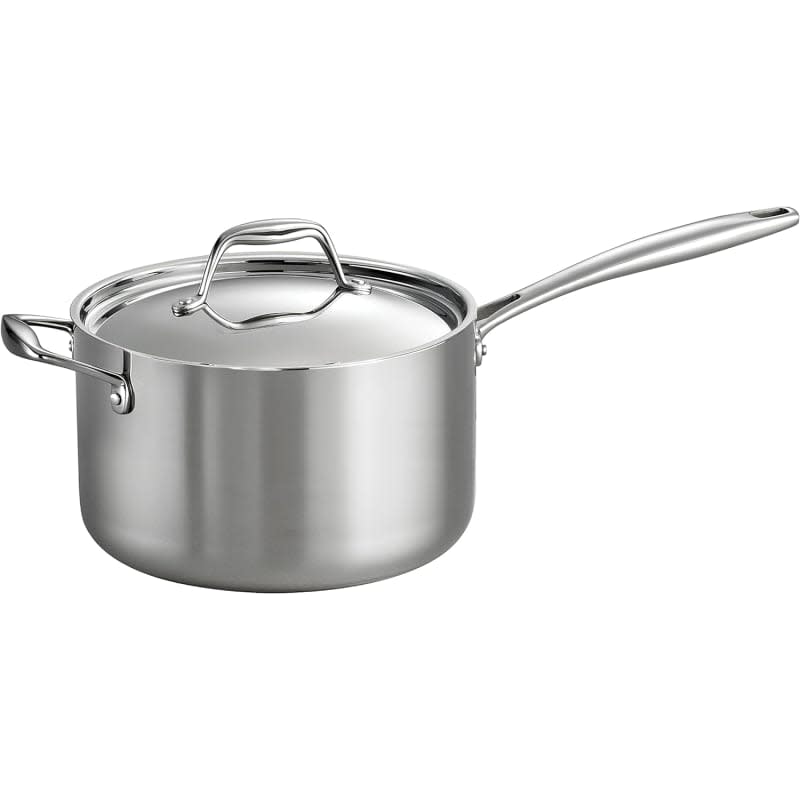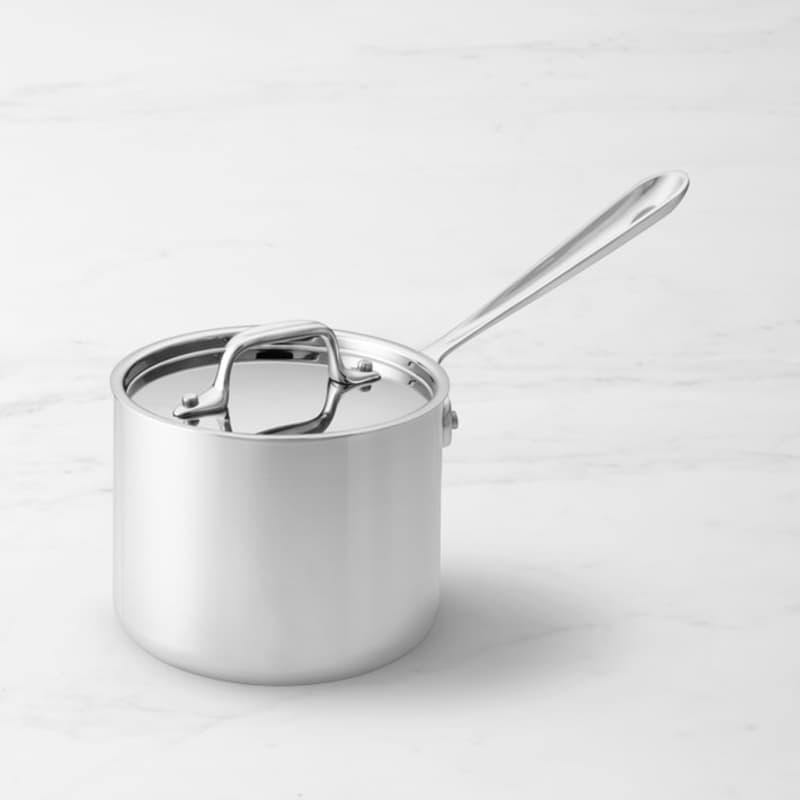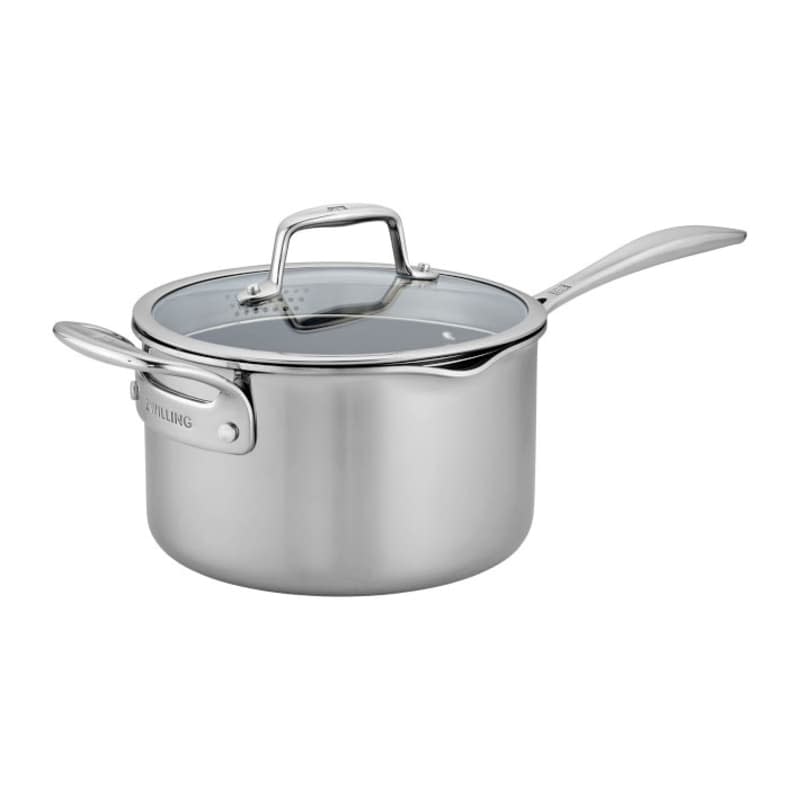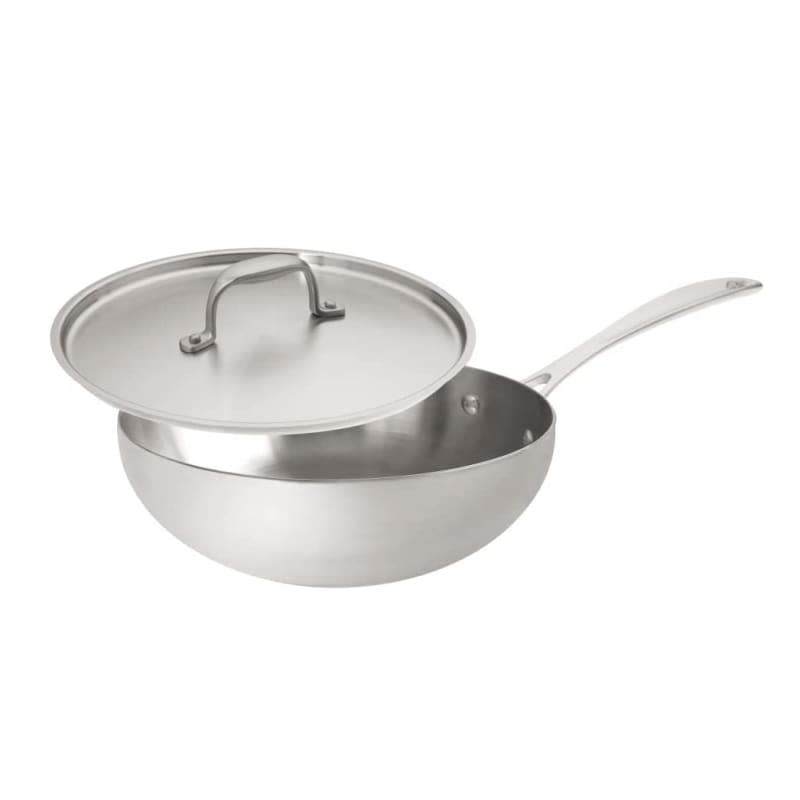The Absolute Best Saucepans You Can Buy Right Now
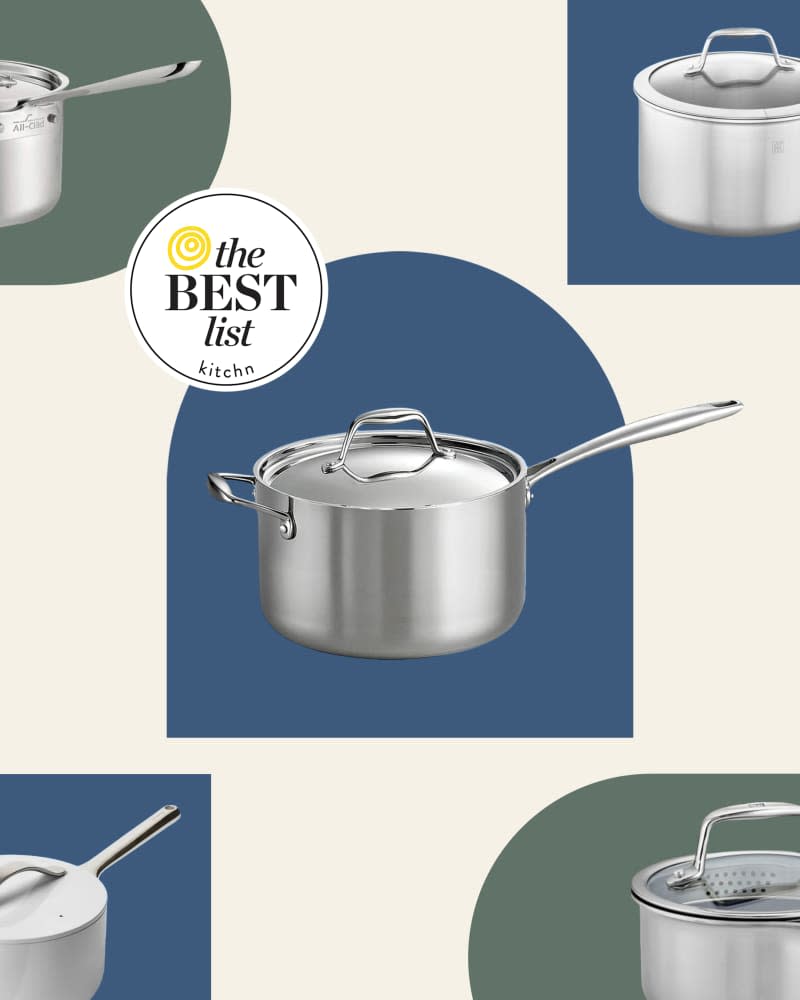
Table of Contents
As a professional kitchen gear tester, writer, and editor, I have covered a lot of cookware: Dutch ovens, nonstick and cast iron skillets, you name it. And while I love covering all those types of pots and pans, there’s one piece, in particular, I use at least daily that doesn’t get much air time: the saucepan.
For some reason, people don’t talk (or ask) about saucepans often, but I think it’s time to change that. Saucepans are ideal for cooking grains, boiling a serving or two of pasta, blanching veggies, making a batch of barbecue sauce, reheating chili or soups … the list goes on.
There are as many saucepans as there are uses for them, so to find the best ones, we here at The Kitchn tested models from top-performing brands, making sure to stir, whisk, and pour again and again and again. Let’s get to it.
What We Look for in a Saucepan
When it comes to saucepans, there are three areas we consider when deciding what makes a great pick:
Performance: How well did the saucepans cook?
Ease of use: How easy is it to hold and pour from the saucepan?
Cleanup: Does the saucepan clean up easily and/or become discolored after cleanup?
Below, we rounded up some of the best saucepans on the market today that hit all of these criteria and then some, including some long-standing favorites of the team here at The Kitchn, as well as reader favorites you all can’t get enough of.
Do you have a saucepan you swear by that didn’t make this list? We want to hear all about it. Tell us about your favorite finds in the comments below!
Tramontina Covered Saucepan, 4 Quart Tramontina Covered Saucepan, 4 Quart
Tramontina's 4-quart saucepan offers fantastic performance at a budget-friendly price (high-end saucepans, like our top splurge pick, easily go for $200-plus when not on sale). It has tall, straight sides, a spacious cooking surface, a sturdy main handle, and a helper handle on the opposite side. The Tramontina is made from stainless steel, which cooks evenly and allows you to easily monitor browning.
While the handle lacks the cupped shape we find easiest to hold, it's still grippy enough and doesn't heat up on the stovetop. This saucepan's interior lost some of its shine after repeated washings; however, it's still a fantastic pan that we think most home cooks will be incredibly pleased with — especially at this price.
I also liked this saucepan from Zwilling, which is a solid pot with a grippy, cup-shaped handle. The main handle is a tad short and doesn't have a helper handle, but it's another great option if you have a slightly larger budget.
Who it's best for: Anyone who wants a great stainless steel saucepan, but doesn't want to spend more than $100.
Good to know: This saucepan comes in several different sizes, including 1.5-, 2-, and 3-quarts.All-Clad D3 Tri-Ply Stainless-Steel Saucepan, 3 Quart All-Clad D3 Tri-Ply Stainless-Steel Saucepan, 3 Quart
If you're looking to invest in your cookware, there's no better pick than All-Clad's saucepan. This saucepan does it all — it heats beautifully, cooks evenly, has tall, straight sides, boasts a helper handle, and has a stainless steel interior, which makes monitoring browning easy. The pan's cupped handle provides a non-slip grip and stays cool on the stovetop.
The only downside? The price. However, you can occasionally find the saucepan on sale, so those who want to invest won't be disappointed by this cookware's quality.
Who it's best for: Anyone looking to invest in a stainless steel saucepan.
Good to know: All-Clad makes some of the best cookware out there — and the saucepans are no exception. When I say you can't go wrong with any of them, I mean it. This saucepan also comes in a 1.5-, 2-, and 3-quart version.Zwilling Clad CFX Ceramic Nonstick Sauce Pan, 4 Quart Zwilling Clad CFX Ceramic Nonstick Sauce Pan, 4 Quart
This nonstick 4-quart saucepan from Zwilling offers impressive performance at a reasonable price point. Nothing stuck during testing and the food cooked evenly. We love its helper handle, pour spouts, tall, straight sides, perforations in the lid for draining water, and its cup-shaped handle that felt super grippy and stayed cool on the stovetop.
The dark interior makes it more difficult to monitor browning, and it's the heaviest of all the saucepans tested. We were still able to pour from the saucepan using one hand, but this might be too heavy for some people. Overall, this is a great nonstick saucepan and is incredibly easy to clean, too.
We also really liked the Caraway Saucepan, which has a light-colored interior for easy monitoring, comes in fun colors, and has a shaped handle for better ergonomics. It's only available in a 3-quart size, but if you typically cook for one, the capacity will be fine. The direct-to-consumer brand's saucepan, in particular, is a winner among The Kitchn team.
Who it's best for: Anyone who is looking for a nonstick saucepan that's easy to clean and cooks well.
Good to know: This pan comes in three sizes — 1-, 2-, and 3-quarts.American Kitchen Stainless Steel Saucier, 3 Quart American Kitchen Stainless Steel Saucier, 3 Quart
When our SEO commerce editor Sarah put the American Kitchen saucier to the test, she knew she found a new kitchen staple. With curved sides, sauciers are a great choice for those looking to avoid any kinds of sticking in corners. This pan features a 3-quart capacity, making it great for, well, anything. "From intricate risottos and warm winter stews to braised roasts, sautéed vegetables, and even custards for baking, this pan does everything — and does it well," shared Sarah.
Complete with a stay-cool handle, ergonomically designed for a comfortable grip, and an oven-safe rating up to 500 degrees Fahrenheit, it's one of the more versatile pieces you could add to your kitchen. And another bonus to this saucier's sloped, bowl-like design? It's also a dream to clean.
Who it's best for: Anyone who prefers the curved shape found in a saucier and it looking for a piece that makes cooking stirrable foods easier.
Good to know: The brand also makes a great traditional 1-quart saucepan, perfect for those looking for something compact and small-space friendly.
How to Choose the Right Saucepan
The Size
Saucepans come in many sizes, but we find that a 4-quart pot is best. You can always cook less in a larger saucepan, but you can’t cook more in a smaller one. We think it’s helpful to have both a large and small saucepan, but if you’re only going to get one, opt for a 4-quart capacity. For testing, we focused on 4-quart saucepans but included some 3-quart models if that was the largest size the pan came in.
The Weight
You want it hefty enough to heat food evenly (thin pans tend to have more hotspots and can scorch food) but light enough so it’s still easy to pour from, even with one hand. During testing, we found that saucepans weighing less than 3 1/2 pounds without their lids were the sweet spot.
With this weight, we got the cooking results we wanted and could still comfortably tilt the saucepan to pour out boiling water, swirl it around while browning butter, and easily pour my pastry cream into a fine mesh strainer.
The Shape and Interior
The best saucepans have tall walls and straight sides, which don’t cut down on the saucepan’s usable cooking area. Saucepans with light interiors are also preferable to ones with dark interiors, as this helps for monitoring, like if you’re making browned butter or if you’re sautéing aromatics for risotto.
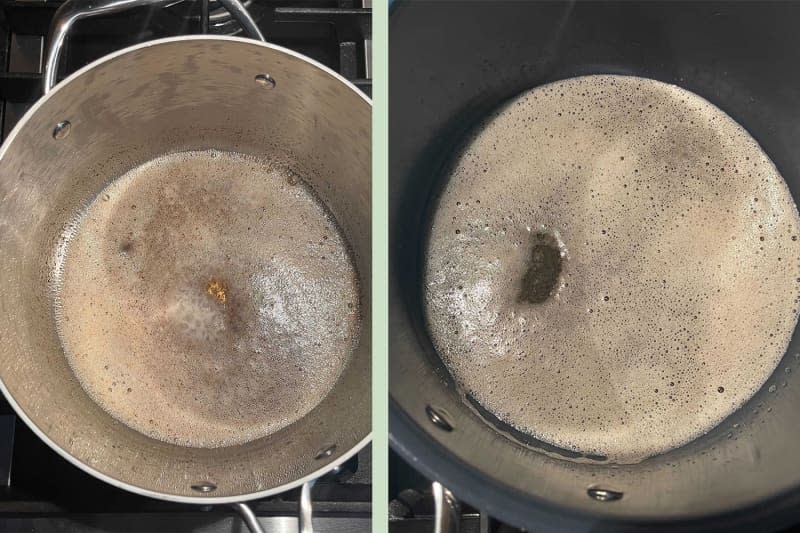
The Handle
If we can’t firmly and securely grip a pan’s handle, we can’t lift it well — which means we also can’t swirl or pour with ease. The handle shouldn’t be too skinny or too rounded, both of which are tougher to hold and tend to slip from your hand as you pour.
We prefer handles that are cupped, meaning they have indentations at the top to ensure a non-slip grip. The best handles were also at least 7.25 inches long because that length will help keep your hands comfortably away from the heat source.
This brings us to our next handle-centered point: Does the saucepan’s handle stay cool while cooking? If it doesn’t, we don’t want it. And, finally, saucepans that have a helper handle opposite the regular handle are, well, the most helpful. A helper handle is useful for moving the saucepan around the stovetop and if you need extra leverage when pouring. It’s not a must-have, but it is very nice.
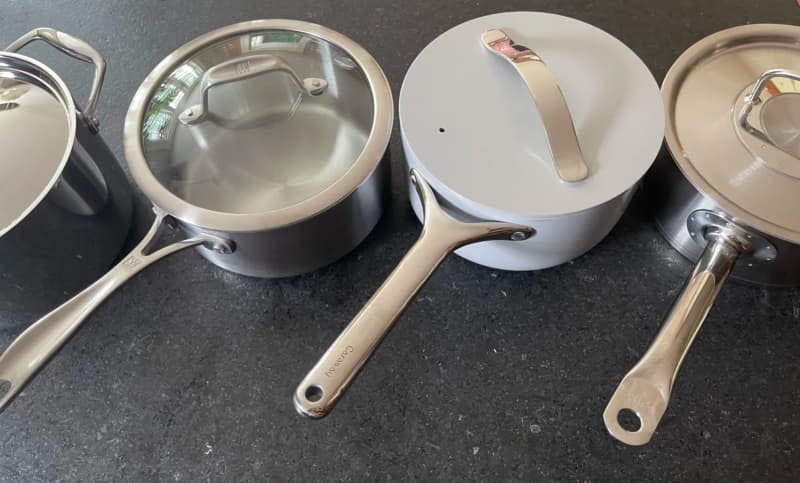
FAQ: Everything You Need to Know About Saucepans
What is a saucepan?
Typically ranging in size from 1-quart to 4-quarts, saucepans are a staple piece of cookware every chef, whether home or professional, needs in their collection. Think of these pieces as the stock pot’s versatile baby sister. Perfect for whipping up sauces, simmering soups, boiling grains, and even deep frying, these pots are designed to cook liquids in small batches.
Saucepan vs Saucier
While many people use them interchangeably, a saucepan and a saucier are very different thanks to one thing: their sides. A traditional saucepan features a flat bottom (providing closer contact with the burner) and straight edges, making it a go-to for boiling, simmering, and braising. A saucier, on the other hand, has a bowl-like shape with sides are sloped and rounded, making them a great choice for those working with stirrable foods they’re concerned about getting caught in corners and burning (think: sauces, risottos, and caramels).
What material is best for a saucepan?
This mirrors that of a nonstick skillet: For super gooey things, a nonstick saucepan means easier cooking and cleanup. This includes making sauces or reheating macaroni and cheese (and to no one’s surprise, cleaning pastry cream off of a nonstick saucepan was much easier than the stainless steel models). However, with stainless steel saucepans, you get longevity. Nonstick cookware has a finite lifespan, but a great stainless steel saucepan will last for years. Because of this, we recommend buying a stainless steel saucepan first and a nonstick saucepan to complement it.
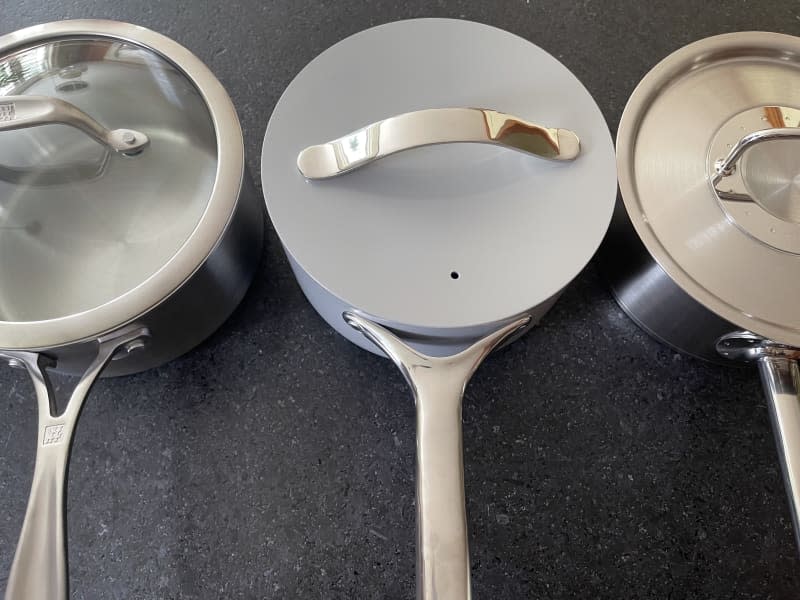
Can you put saucepans in the oven?
In most cases, the answer is yes. However, it’s important to check the manufacturer’s instructions so you’re aware of your pans’ materials as well as up to what temperature your piece can withstand. For the most part, saucepans are made of metal (stainless steel, aluminum, cast iron, etc) and metal is oven-safe. That being said, be sure to pay close attention to whether or not your pieces feature any plastic or wooden accents as these are not oven-safe.
How to Clean a Saucepan
With all of the saucepans, we made sure their interiors didn’t dull or become splotchy after cleanup. While you can put a saucepan in the dishwasher, we don’t recommend it — we’d suggest hand-washing any cookware that you want to last. The heat and detergent from the dishwasher can tarnish stainless steel cookware and cause nonstick cookware to lose its, well, nonstickiness faster, so they’re among the many kitchen items you shouldn’t put in the dishwasher.
How We Shop for You
Our writers and editors put hundreds of products to the test every year to determine which ones get our stamp of approval and are really worth your time and money. If we love it, you’ll hear about it.
Why You Should Trust Us
Our team is made up of writers and editors with years of experience in the home, kitchen, and parenting consumer product space, and who are always testing for new tried-and-true staples.
How We Test Products
We put products to the test right where they matter: at home. We bring these products into our personal spaces and test them for weeks and even months to see if they live up to their claims. At the end of the day, we’re consumers too, so we’ll provide you with all the information we’d want — and then some.
